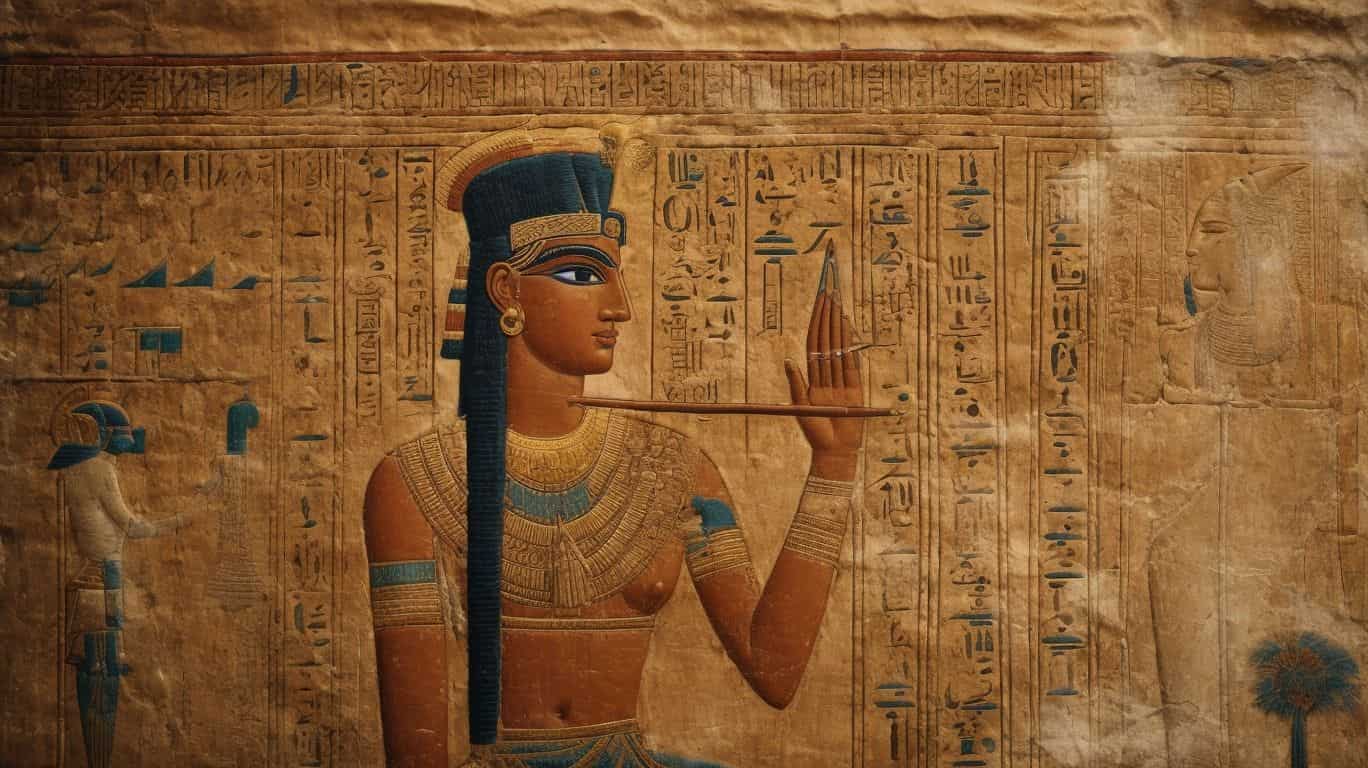Step into the captivating realm of Ancient Egyptian mythology and uncover the mystical allure of Goddess Seshat, revered as the divine muse of writing. As the celestial patroness of knowledge, record-keeping, and architecture, Seshat played a pivotal role in the fascinating tapestry of Egyptian civilization. Let us embark on a journey of discovery as we delve into the captivating stories and symbols associated with this revered Goddess.
The Origins and Symbolism of Seshat:
Seshat, often pronounced as “Sesh-uh-at”, bore the title of “Lady of the Builders” and was believed to have been born from the union of the sky goddess Nut and the air god Thoth. She was bestowed with unparalleled wisdom, foresight, and a profound connection to the art of writing. To honor her unique role, Seshat was often depicted as a woman wearing a leopard skin dress, donning a star-adorned headdress, and wielding a palm-rib pen, a potent symbol of creativity and documentation.
The Role of Seshat in Ancient Egyptian Society:
Keeper of Records and Historiography:
Goddess Seshat held the significant responsibility of recording divine and mortal events, ensuring the preservation of history and knowledge for future generations. She was closely associated with the “Per Ankh,” the House of Life, where ancient Egyptian scribes meticulously recorded rituals, astronomical observations, and pharaonic decrees.
Architectural Mastery and Measurement:
Seshat’s domain extended beyond writing, as she was also hailed as the deity of architectural design and measurement. She aided in the construction of sacred buildings, including elaborate temple complexes and royal tombs, by employing her expertise in geometry, mathematics, and surveying.
Patroness of Astrology and Divination:
The Goddess Seshat was revered as an oracular deity, guiding priests and pharaohs in the art of astrology and divination. She often held a vital role in temple rituals, using her profound knowledge to decipher celestial signs and predict propitious times for various religious ceremonies.
Worship and Cult of Seshat:
Devotion to the Goddess Seshat permeated throughout Egyptian society, with numerous temples and shrines dedicated to her worship. Among the most notable were the temples at Karnak, Luxor, and Hermopolis. Special ceremonies and rituals were conducted to honor Seshat, revered as the source of inspiration for scribes and all those seeking guidance in matters of intellectual pursuits.
Conclusion:
Goddess Seshat, the revered deity of writing and knowledge, played an indelible role in shaping the fabric of Ancient Egyptian society. Her influence extended beyond the realm of writing, embracing diverse pursuits such as architecture, astrology, and divination. As we immerse ourselves in the captivating world of Egyptian mythology, let us celebrate the enduring legacy of Seshat, the divine muse of writers and the eternal guardian of knowledge.



Comment (0)